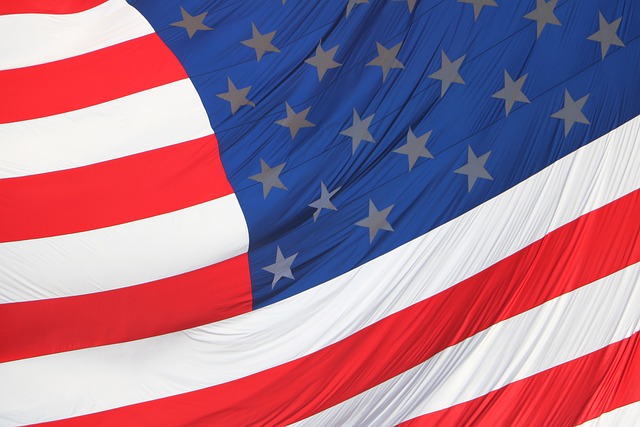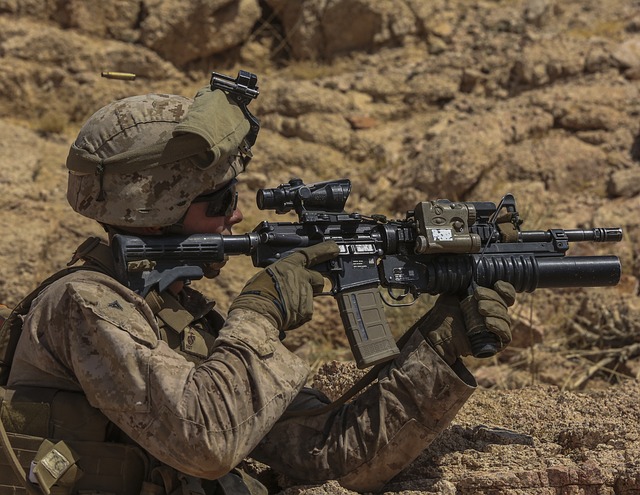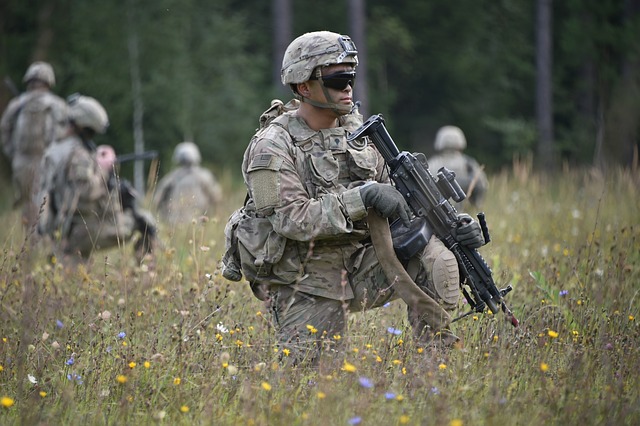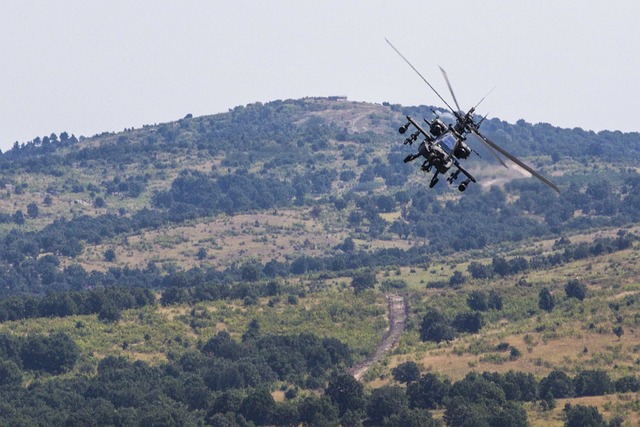
The article examines the historical and cultural impact of embroidery on challenge coins and patches within military traditions, with a focus on the iconic 101st Airborne Division Flag. Originating during World War II, this flag symbolizes the division's rapid deployment capabilities and has become a testament to its valor and significant contributions in conflicts like World War II, the Vietnam War, and beyond. The intricate embroidery on these items captures the unit's legacy, with each element representing its courage, resilience, and commitment. As symbols of unity and pride, they are deeply personal, often incorporating bespoke motifs that celebrate individual accomplishments as well as shared experiences. These emblems not only serve as a tangible representation of the division's ethos but also play a crucial role in educating new recruits about its traditions and heritage through visual storytelling. The 101st Airborne Division Flag, with its detailed design, remains an enduring and revered symbol that continues to inspire current and former members, reinforcing their shared identity and commitment to upholding the division's storied past.
Embroidered challenge coins and patches have long been emblems of identity, honor, and tradition within various organizations, particularly within the military. This article delves into the rich history and enduring significance of these intricate designs, from their roots to their modern manifestations. We will explore how the 101st Airborne Division Flag embodies the essence of valor and heritage, and how craftsmanship and customization give rise to a diverse tapestry of embroidered symbols. Join us as we examine the role of these artful representations in military tradition and their evolution in today’s context, offering a window into a world where each stitch tells a story of service, pride, and camaraderie.
- Unraveling the Significance of Embroidered Motifs on Challenge Coins and Patches: A Historical Perspective
- The Artistry Behind the 101st Airborne Division Flag Embroidery: A Symbol of Valor and Heritage
- Craftsmanship and Customization: Exploring the Variety of Embroidered Designs in Challenge Coins and Patches
- The Role of Embroidery in Military Tradition and Its Evolution Today
Unraveling the Significance of Embroidered Motifs on Challenge Coins and Patches: A Historical Perspective

Embroidered motifs on challenge coins and patches hold a rich tapestry of historical significance that extends beyond their use as symbols of military units or emblems of brotherhood within service branches. These intricate designs often trace their origins to the 101st Airborne Division Flag, an iconic symbol that has come to represent valor and commitment in the face of adversity. The flag itself, first unfurled during World War II, embodies the division’s motto “Currahee,” a Cherokee word meaning “We stand alone.” This historic emblem has influenced the design and cultural importance of challenge coins and patches across military groups worldwide.
Challenge coins, minted with detailed engravings or hand-painted symbols, serve as tangible reminders of shared experiences and achievements. They are not merely mementos but are part of a tradition steeped in history and honor. Similarly, patches bear the legacy of their inspiration, the 101st Airborne Division Flag, serving as badges of identity for the individuals who wear them. Over time, these emblems have evolved to include various regalia, each with its own narrative and significance. The tradition of embroidering challenge coins and patches has thus become a way to preserve historical moments, celebrate unit lineage, and convey the esprit de corps that binds military personnel together through time and across conflicts.
The Artistry Behind the 101st Airborne Division Flag Embroidery: A Symbol of Valor and Heritage

The embroidery that adorns the 101st Airborne Division Flag is a testament to the rich history and unwavering valor of this esteemed unit. Each thread woven into the fabric captures the essence of the division’s legacy, with intricate designs that symbolize the courage and resilience exhibited by its members. The artistry behind this embroidery is a blend of tradition and modern craftsmanship, reflecting the division’s commitment to uphold the values it represents. The flag’s central image often features an eagle clutching a wreath, symbolizing remembrance and victory, flanked by the unit’s motto “Death from Above.” This embroidery is not merely decorative; it serves as a visual narrative of the 101st Airborne’s pivotal roles in various conflicts, encapsulating the sacrifices made and the triumphs achieved. The precision and detail involved in this embroidery honor the division’s heritage and instill a sense of pride among its soldiers, past and present.
The 101st Airborne Division Flag embodies the spirit of an elite force known for its rapid deployment capabilities and strategic importance. The embroidery on the flag is crafted to withstand the test of time, mirroring the enduring nature of the division itself. It is a symbol that unites the diverse members under a common banner, each element serving as a reminder of their shared experiences and the high standards they uphold. The artistry of the embroidery also serves an educational purpose, providing new recruits with a visual understanding of the division’s storied past and the traditions it upholds. This embroidered flag is a crucial component in ceremonial events, serving as a tangible representation of the 101st Airborne Division’s ethos and its indelible mark on military history.
Craftsmanship and Customization: Exploring the Variety of Embroidered Designs in Challenge Coins and Patches

Embroidery on challenge coins and patches has long been a testament to tradition, craftsmanship, and personalization within military units, law enforcement agencies, and various organizations. The 101st Airborne Division Flag, an emblem of valor and history, is a prime example of how intricate designs can convey significant meaning and pride. Artisans specializing in this art form employ a blend of skill and precision to bring these symbols to life, ensuring each stitch captures the essence of the unit’s legacy. The variety of embroidered designs available for challenge coins and patches is vast, ranging from the iconic 101st Airborne Division Flag to custom motifs that reflect individual units or personal achievements. These items serve as tangible reminders of one’s service, accomplishments, and affiliations, often featuring detailed imagery and text that withstands the test of time. The process of customization allows for a deep level of personal connection, making each piece a unique keepsake that carries both historical significance and sentimental value. Whether adorning uniforms or displayed in private collections, these embroidered tokens are more than mere decorations; they are a narrative woven into fabric, representing the spirit and camaraderie of their bearers.
The Role of Embroidery in Military Tradition and Its Evolution Today

Embroidery has long been a significant emblem of identity and honor within military culture, particularly evident in the tradition of challenge coins and unit patches. The art of embroidery serves as a testament to the history and valor of various military divisions, with each stitch contributing to a rich tapestry of service heritage. For instance, the 101st Airborne Division Flag, with its distinctive eagle in flight above a parachute, symbolizes the rapid response and readiness that are hallmarks of this elite unit. This flag, often embroidered onto challenge coins and patches, represents not just a symbol of pride but also a tangible link to the division’s storied past, including its pivotal role in major conflicts such as World War II, the Vietnam War, and current operations.
The evolution of these emblems reflects the changing nature of military engagements and the modernization of their representations. Today, embroidered challenge coins and patches incorporate advanced materials and designs that not only preserve tradition but also adapt to contemporary practices. These items have transcended their original purpose as a unit identifier during times of conflict, becoming collector’s items and a means of fostering esprit de corps among service members. The intricate embroidery on these tokens continues to tell the story of the 101st Airborne Division Flag, capturing its iconic imagery and imbuing it with significance that resonates across generations of soldiers. As the military tradition evolves, so too does the artistry in the embroidery, ensuring that these symbols remain both relevant and revered within the armed forces community.
Embroidered challenge coins and patches have long stood as enduring symbols of identity, achievement, and camaraderie, particularly within military culture. As explored in “Unraveling the Significance of Embroidered Motifs on Challenge Coins and Patches: A Historical Perspective,” these items are steeped in history, serving both decorative and commemorative purposes. The intricate embroidery of the 101st Airborne Division Flag, detailed in “The Artistry Behind the 101st Airborne Division Flag Embroidery: A Symbol of Valor and Heritage,” exemplifies the tradition’s depth, paying homage to a storied past and the valor of its members. The exploration of “Craftsmanship and Customization: Exploring the Variety of Embroidered Designs in Challenge Coins and Patches” reveals the breadth of artistic expression and personalization available within this unique cultural practice. Ultimately, as discussed in “The Role of Embroidery in Military Tradition and Its Evolution Today,” embroidery remains a vital element in military tradition, adapting to modern tastes while preserving its historical significance. These woven testaments are not merely tokens; they are tangible connections to heritage, achievements, and the shared experiences that bind service members together.





